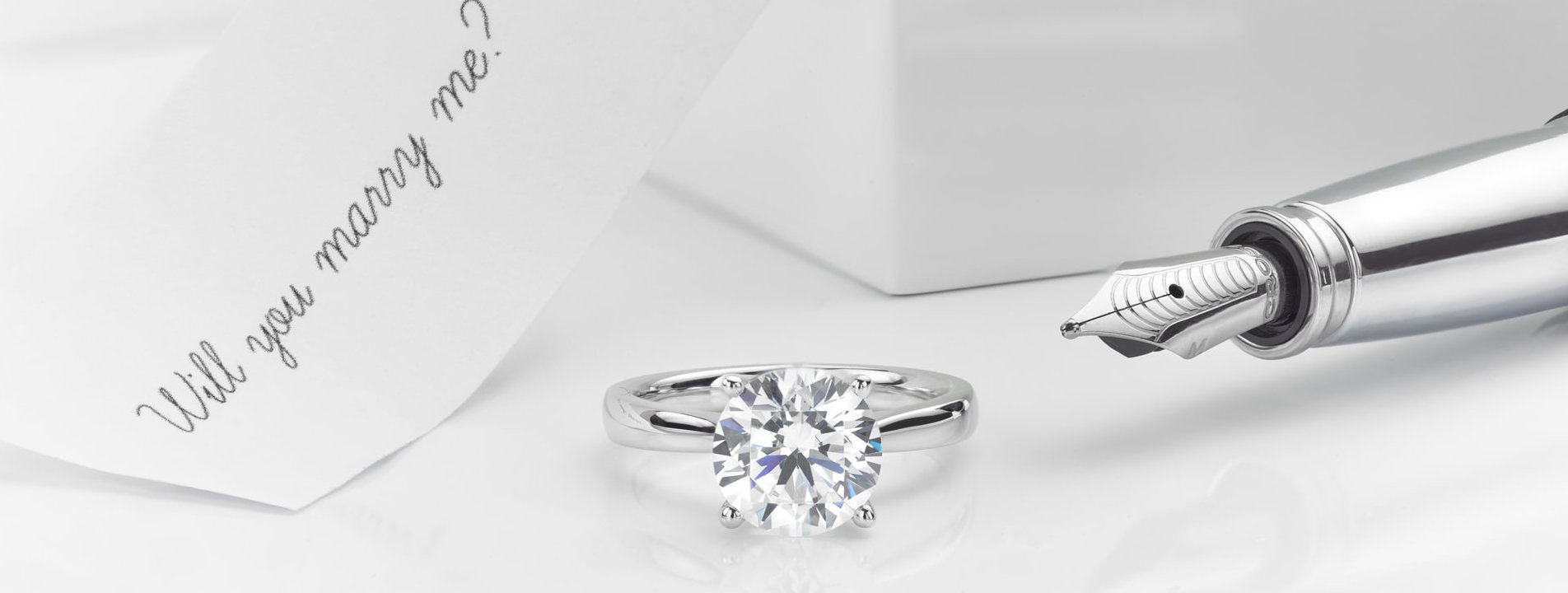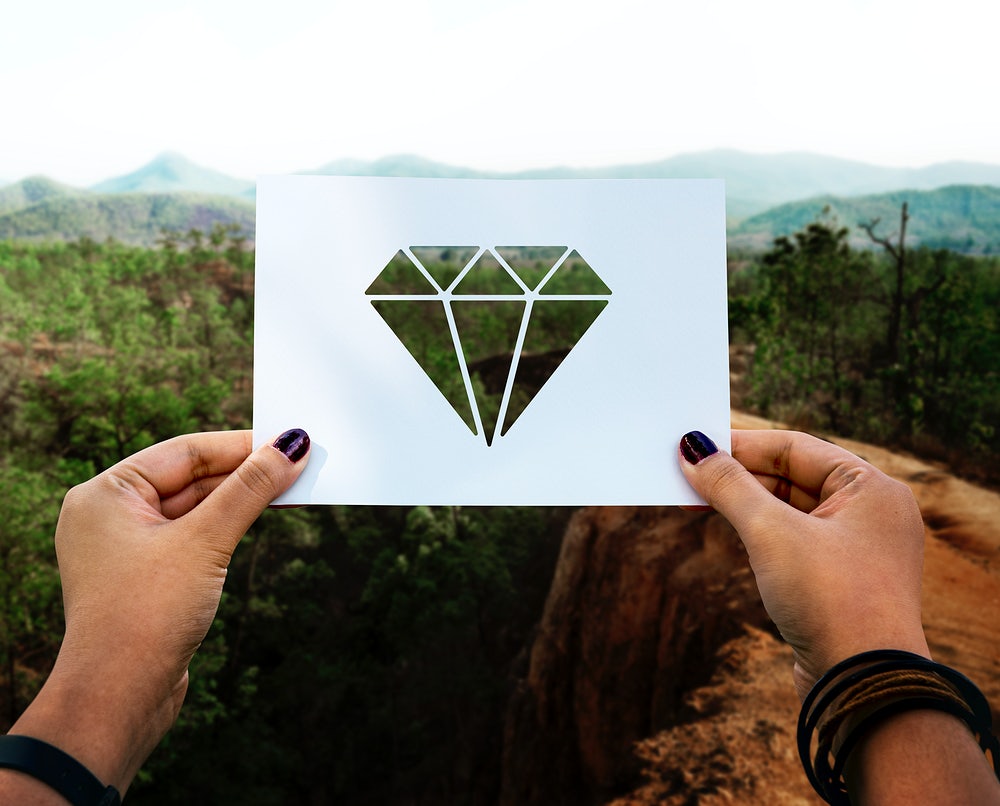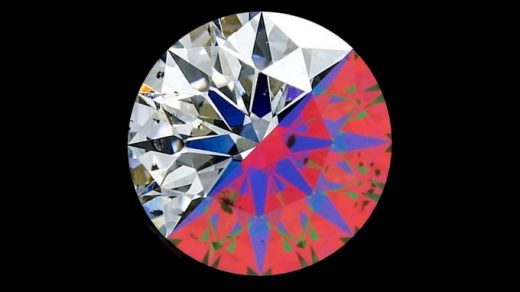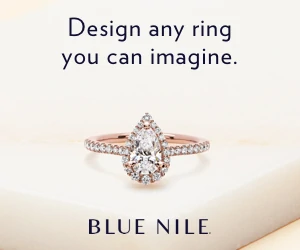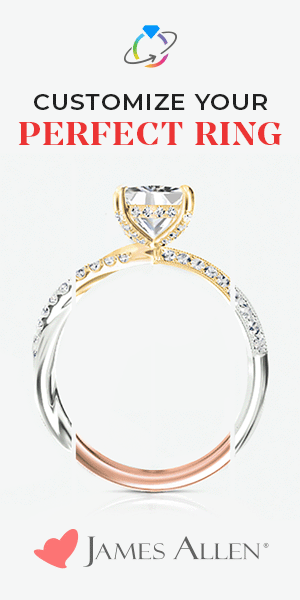
A diamond’s color has an effect on both its appearance and its value.
The color classification of diamonds is based on grades in a continuum of color.
The color intensities range from colorless to unmistakably tinted.
Each step on a color scale is a very small increment.
Color grades start at D and go to Z. This is just for diamonds the “normal range” of diamond color.
Diamonds with more color than Z are rare and have their own special name: “fancy colors”
Fancy colors are graded in a completely different way and beyond the scope of this article.
There are some things about color in diamonds which are not immediately obvious and can trip up a beginner.
Here are some common mistakes people make, and now that you’re here you will be able to avoid them.
Mistake 1: Thinking Color Affects all Shapes Equally
A great deal of advice is found online relating to color.
What a lot of people don’t realize is that the majority of that advice regards round brilliant diamonds.
Round brilliants are popular.
The shape continues to be the most loved shape not only for the wide variety of settings they can be put into: the shape returns light in the most efficient way compared to all other shapes.
When the angles of a round brilliant diamond are just right they make a diamond look super bright and sparkly, but also appears to have less color.
The amount of color you will see in such a diamond will actually be less when viewed face up.
The color will be difficult to detect because the light traveling through the diamond actually reduces the apparent color.
For this reason it is possible an H or even I color diamond to not look too bad (color-wise) when it is cut to return light in an efficient way.
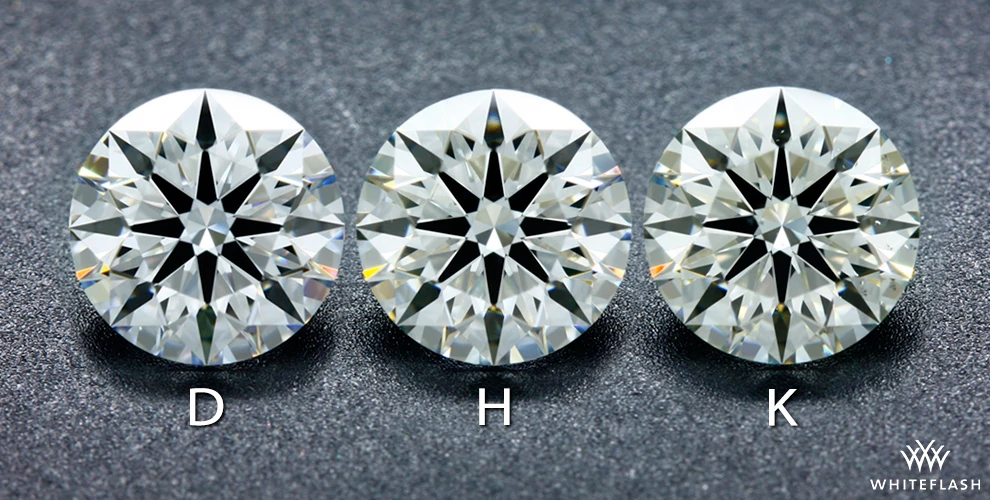
Some people even find that they don’t mind a K color diamond when the diamond is cut to super ideal standards.
Mistake 2: Assuming All Laboratories Use The Same Color Grading System
In order to know the color grade of a diamond with any certainty the stone has to be assessed by a gemological laboratory.
The color scale most people are familiar with is the color grading scale made popular by GIA.
This starts at D and ends at Z for the non-fancy color diamonds.

The two labs which used the same master stones to create their color scale are GIA and AGS.
A diamond grading report issued by any other lab may not match up 100% to the GIA color scale.
Mistake 3: Thinking That Fluorescence Will Improve Color
Diamond fluorescence is an effect found in some diamonds.
When fluorescent diamonds are exposed to ultraviolet rays from the sun, fluorescent lamps or other sources they will glow.
The effect can most easily be observed when other sources of light are switched off.
This emitted light is usually blue but it can be various colors.
There are also varying intensities.
So fluorescence can be faint to very strong.
The distribution pattern of fluorescence can also be varied.
Fluorescence is entirely dependent on a source of ultra-violet light.
Many in the diamond business point out that strong blue fluorescence can make a light yellow diamond look closer to colorless.
Blue and yellow are color opposites and tend to cancel each other out, so blue fluorescence masks the yellow color.
Even so, one must remember that any effect only happens when the stone is exposed to a UV source such as sunlight.
Turn off the UV, and the effect stops.
So what does the research say? Has fluorescence been found to improve color in controlled tests?
GIA has conducted extensive observer testing to determine the impact of fluorescence on diamond color in the D-to-Z range.
Here’s what GIA has found:
“For the average observer, no systematic effects of fluorescence were detected on the face-up appearance of the groups of diamonds. Even experienced observers did not consistently agree on the effects of fluorescence from one stone to the next.”
As a result of their research, GIA considers diamond fluorescence to be an identifying characteristic, not a grading factor.
Fluorescence has little to no impact on what color the diamond is. Wanna argue this point? Take it up with GIA.

